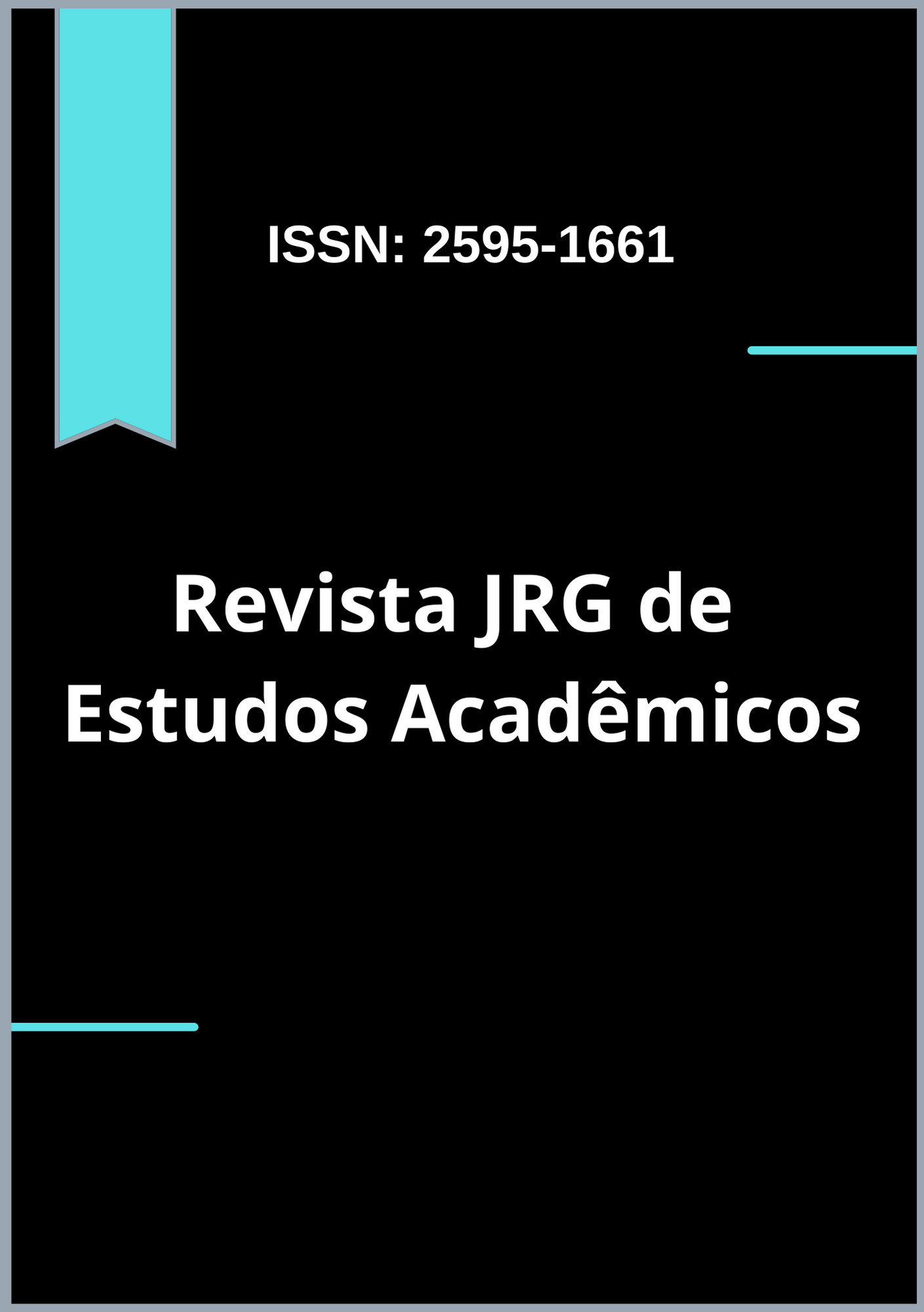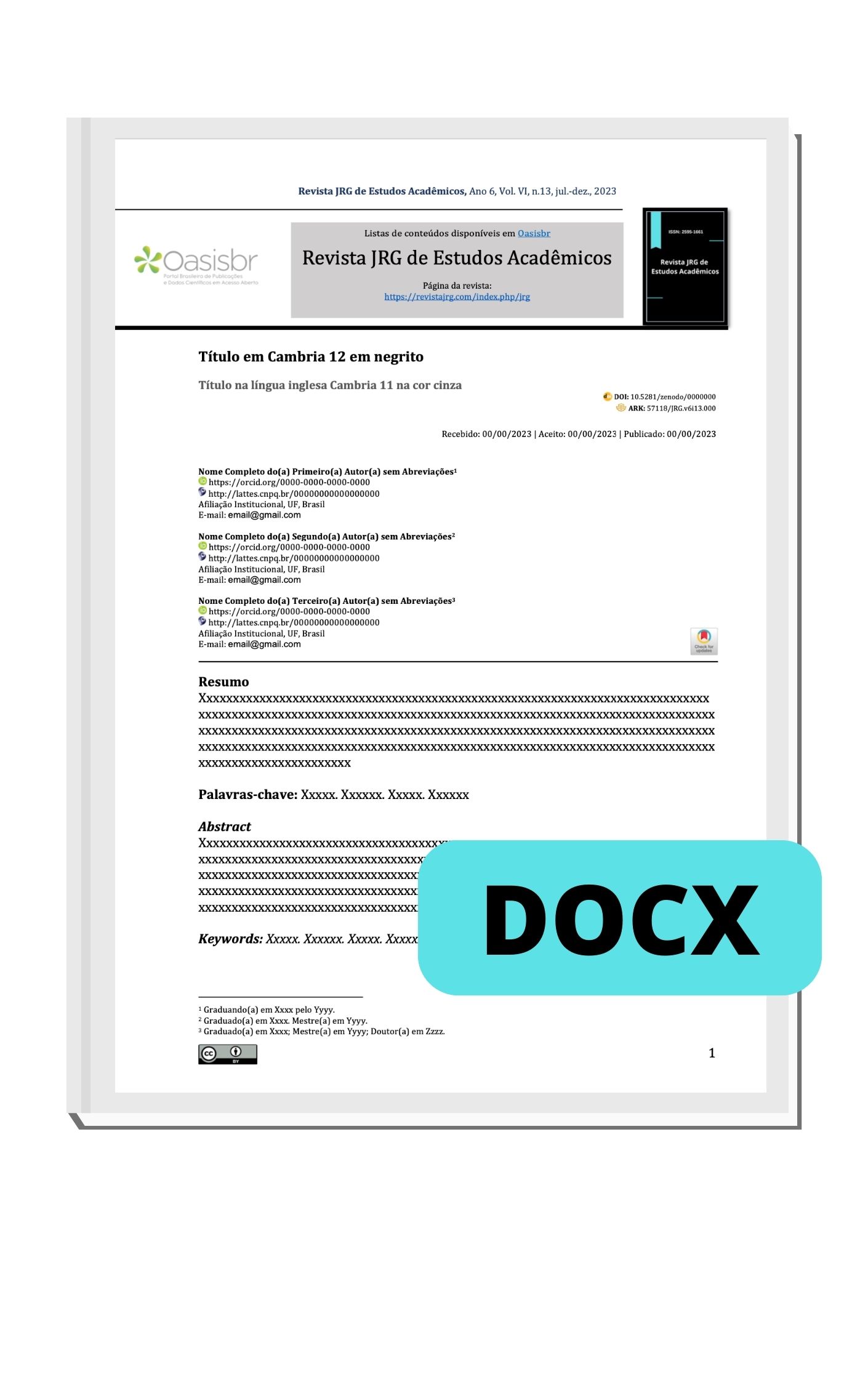Assistive technology and quality of life for people with leprosy-related limitations: scoping review
DOI:
https://doi.org/10.55892/jrg.v8i19.2380Keywords:
Leprosy. Quality of Life. People with Disabilities. Assistive Technology. Assistive DevicesAbstract
Introduction: Quality of life is a multidimensional concept associated with an individual's perception of various life contexts and is related to health perspectives. However, in the context of people with leprosy, there is a general impairment in quality of life, which can lead to physical disabilities and neuropathies. Given the indispensability of aspects that aim to intervene in these factors and promote quality of life, Assistive Technology resources can be used. Objective: To map the existing scientific literature that addresses the use of assistive technology as an improvement in the quality of life of people with limitations resulting from leprosy. Methods: This is a scoping review study, with articles published between 2020 and 2024, conducted in the Medline databases via PubMed, Biblioteca Virtual em Saúde (BVS), LILACS via BVS, and SciELO, based on the guiding question: “What scientific evidence is available on the use of assistive technology to improve the quality of life of people with limitations resulting from leprosy?” The search used the descriptors “assistive technology, assistive devices, self-help devices, assistive equipment, self-help equipment, leprosy, hansen’s disease, quality of life, and health-related quality of life” and their respective portuguese equivalents, combined with the boolean operators “AND” and “OR.” Results: Initially, 9.357 studies were identified, and after applying inclusion and exclusion criteria, eliminating duplicate papers, and conducting a detailed evaluation of the full texts, five studies met the eligibility criteria and were included in the final sample. Conclusion: Based on the analysis of the included studies, it was observed that assistive technology has significant potential to restore functionality, promote autonomy, and reduce the limitations imposed by physical disabilities caused by the disease, in terms of physical and psychological aspects.
Downloads
References
AROMATARIS E. et al. JBI Manual for Evidence Synthesis. [s.l.] : JBI, 2024. Disponível em: https://synthesismanual.jbi.global. Acesso em: 08 Mai. 2024.
BRASIL. Ministério da Saúde. Secretaria de Vigilância em Saúde. Departamento de Vigilância das Doenças Transmissíveis. Guia prático sobre a hanseníase. Brasília: Ministério da Saúde, 2017. Disponível em: https://www.gov.br/saude/pt-br/centrais-de-conteudo/publicacoes/svsa/hanseniase/guia-pratico-de-hanseniase.pdf/view.
BRASIL. Ministério da Saúde. Secretaria de Vigilância em Saúde. Hanseníase no Brasil: perfil epidemiológico segundo níveis de atenção à saúde. Brasília: Ministério da Saúde; 2022a. Disponível em: https://antigo.aids.gov.br/pt-br/pub/2022/hanseniase-no-brasil-perfil-epidemiologico-segundo-niveis-de-atencao-saude. Acesso em: 07 mai. 2024.
BRASIL. Ministério da Saúde. Protocolo Clínico e Diretrizes Terapêuticas da Hanseníase 2022. Brasília: Ministério da Saúde, 2022b. Disponível em: https://www.gov.br/saude/pt-br/assuntos/saude-de-a-a-z/h/hanseniase/publicacoes/protocolo-clinico-e-diretrizes-terapeuticas-da-hanseniase-2022. Acesso em: 07 mai. 2024;
CARVALHO, A.A.D.L. et al. O desenvolvimento de dispositivos assistivos para auxílio nas atividades de vida diária de pessoas com sequelas de hanseníase: Atuação do terapeuta ocupacional. Seven Editora, [s. l.], 2023. DOI: https://doi.org/10.56238/medfocoexplconheci-004. Acesso em: 30 jan. 2025.
FERREIRA, R. C et al. Assistive technologies for improving the oral hygiene of leprosy patients residing in a former leprosy colony in Betim, Minas Gerais, Brazil. PloS one, [s. l.], v. 13, n. 7, p. e200503, 2018. DOI: https://doi.org/10.1371/journal.pone.0200503. Acesso em: 05 jun. 2025.
JÚNIOR, J. L. R.; MUNIZ, L.S.; XAVIER, M. B. A utilização da tecnologia assistiva para alimentação na melhora do desempenho ocupacional de hansenianos com mão em garra. Hansenologia Internationalis: hanseníase e outras doenças infecciosas, [s. l.], v. 39, n. 1, p. 22-29, 2014. DOI: https://doi.org/10.47878/hi.2014.v39.35025. Acesso em: 05 jun. 2025.
JÚNIOR, J.L.R. et al. O desenvolvimento de um dispositivo de tecnologia assistiva/ortoprótese para a reabilitação de pacientes com hanseníase e presença de mão em garra e/ou reabsorção óssea. Research, Society and Development, [s. l.], v. 10, n. 16, p. e449101623742-e449101623742, 2021. DOI: https://doi.org/10.33448/rsd-v10i16.23742. Acesso em: 28 jan. 2025.
KHALIL, Hanan et al. The role of scoping reviews in reducing research waste. Journal of clinical epidemiology, [s. l.], v. 152, p. 30-35, 2022. DOI: https://doi.org/10.1016/j.jclinepi.2022.09.012. Acesso em: 08 Mai. 2024.
LOPES, G. F. Eficácia e eficiência das palmilhas na prevenção e reabilitação de úlceras plantares em pés neuropáticos na hanseníase e diabetes. Bauru, 2022. 30f. Especialização Multiprofissional em Assistência Dermatológica do Centro Formador de Recursos Humanos para o SUS/SP - Instituto Lauro de Souza Lima. Disponível em: https://fi-admin.bvsalud.org/document/view/cr6rr#:~:text=Apesar%20das%20palmilhas%20serem%20eficazes,%2Dchave%3A%20%C3%9Alcera%20do%20p%C3%A9. Acesso em: 29 jan. 2025.
MOUSSA, A. B; GASPARINI, G. C. A contribuição da terapia ocupacional no pré e pós-cirúrgico de transferência tendinosa da mão em garra em paciente hanseniano. Multitemas, [s. l.], n. 23, p155-160, 2016. DOI: https://doi.org/10.20435/multi.v0i23.888. Acesso em: 06 mai. 2024.
PETERS, M. D. J. et al. Updated methodological guidance for the conduct of scoping reviews. JBI evidence synthesis, [S. l.], v. 18, n. 10, p. 2119-2126, 2020. DOI: https://doi.org/10.11124/JBIES-20-00167. Acesso em: 08 mai. 2024.
PIRES, G. S. et al. Intervenção da terapia ocupacional associada ao protocolo atividade exercício (PAE): um relato de experiência com pacientes com sequelas neurológicas de hanseníase. Revista Foco, [s. l.], v. 16, n. 7, p. e253, 2023.DOI: https://doi.org/10.54751/revistafoco.v16n7-013. Acesso em 29 jan. 2025.
RODRIGUES, M. G. M. et al. Análise biomecânica e do design de um dispositivo assistivo para pacientes com hanseníase com grau II de incapacidade física. Revista Foco, [s. l.], v. 17, n. 3, p. e4745, 2024. DOI: https://doi.org/10.54751/revistafoco.v17n3-144. Acesso em: 29 jan. 2025.
SAMPAIO, A. P. F. et al. Incapacidades físicas de pessoas com hanseníase. Revista Eletrônica Acervo Saúde, v. 25, p. e18341, 2025. DOI: https://doi.org/10.25248/reas.e18341.2025. Acesso em: 05 jun. 2025.
SANTOS, R. F. et al. Tecnologia assistiva e suas relações com a qualidade de vida de pessoas com deficiência. Revista de Terapia Ocupacional da Universidade de São Paulo, São Paulo, v. 28, n. 1, p. 54-62, 2017. DOI: https://doi.org/10.11606/issn.2238-6149.v28i1p54-62. Acesso em: 05 jun. 2025.
SANTOS, T. P. P. et al. Os impactos do estigma e preconceito nos portadores de hanseníase: uma revisão integrativa de literatura. Revista Eletrônica Acervo Saúde, v. 15, n. 4, p. e10148, 2022. DOI: https://doi.org/10.25248/reas.e10148.2022. Acesso em: 06 jun. 2025.
TORO-HERNÁNDEZ, M. L. et al. Appropriate Assistive Technology for Developing Countries. Physical Medicine and Rehabilitation Clinics, [s. l.], v. 30, n. 4, p847-865, 2019. DOI: https://doi.org/10.1016/j.pmr.2019.07.008. Acesso em: 06 mai. 2024.
TRICCO, A.C. et al. PRISMA extension for scoping reviews (PRISMA-ScR): checklist and explanation. Annals of internal medicine, [S. l.], v. 169, n. 7, p. 467-473, 2018. Disponível em: DOI: https://doi.org/10.7326/M18-0850. Acesso em 08 Mai. 2024.
WORLD HEALTH ORGANIZATION. Rumo à zero hanseníase: Estratégia Global de Hanseníase 2021-2030. WHO [s.l.], 2021. Disponível em: https://iris.who.int/handle/10665/341501. Acesso em: 06 Mai. 2024.











































